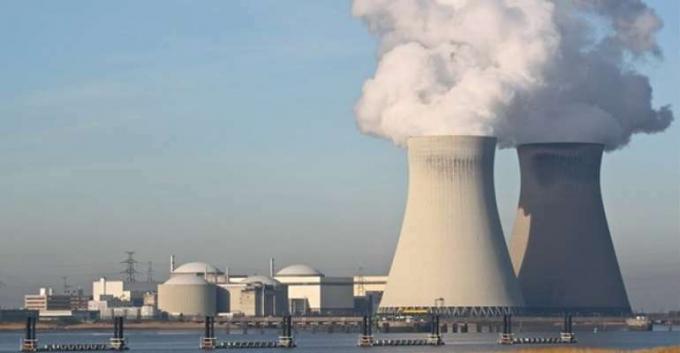Nuclear energy is a very concentrated and high-yield source of energy. Precisely for this reason it is used by several countries around the world, corresponding to about 16% of energy production in the world.
This type of energy is produced and thermonuclear power plants. Thus, energy is made with the use of heat to generate electricity. Heat is generated from the fission of uranium atoms.
see more
Scientists use technology to unlock secrets in ancient Egyptian art…
Archaeologists discover stunning Bronze Age tombs in…

Nuclear energy is not polluting while it is in operation. However, it is extremely necessary to comply with its safety standards. In this way, the dangers of this type of energy are in nuclear waste (radioactive waste), and the contamination they cause to the environment and health.
If exposed to humans, radioactive elements can cause irreversible damage to health, such as cancer, genetic deformities, leukemia, among others. Exposure can happen due to improper disposal of nuclear waste, and mainly due to the risk of nuclear accidents.
Unfortunately, humanity has already witnessed both cases. Problems with disposal of radioactive waste have already happened in Brazil, in Goiânia with the Cesium-137 material. In addition, nuclear accidents of gigantic proportions have caused entire cities to be evacuated.
And some of these terrible accidents were Chernobyl, in 1986, and Fukushima 1, in 2011. Both had different causes, but their destructions leave traces to this day.
Chernobyl vs. Fukushima
Causes
The causes of both disasters are quite different. The Chernobyl accident happened in Ukraine due to human error. On that occasion, reactor 4 exploded while it was in full operation.
The reactor explosion generated a huge mushroom-shaped explosion 1 km high. The gigantic radioactive mushroom threw fragments of graphite with plutonium into the air at enormous temperatures.
The Fukshima accident happened in the city of Õkuma, Japan. The accident was caused by a magnitude 9 earthquake at Richter High School on March 11th.
The phenomenon caused the failure of the safety system in three of the six reactors that were active, also shutting down the plant's cooling system.
After that, a tsunami (caused by the earthquake) left the emergency electricity supply out of order. Thus, the temperature of the reactors rose to the point of causing a partial meltdown in the core, causing then the radioactive leak in three reactors.
damage
Both accidents were classified as level 7 on the IAEA's International Nuclear Event Scale. The level is the highest, symbolizing a serious accident.

The contamination caused by the accident at Chernobyl is considered the largest in history. Due to its location, the contamination has spread to neighboring countries, such as Russia and Belarus. In addition, the radiation cloud spread throughout Europe, with the exception of Portugal.
At Chernobyl two local workers were killed by the initial blast, and three months after the accident a further 29 workers died from radiation. The Ukrainian government had to relocate around 200,000 people from the region.
However, the destruction caused by the explosion was still felt years after it happened. The number of cancers in children in the country has skyrocketed to over 90%. A 2005 United Nations report even stated that 4,000 people could still die from radiation from Chernobyl.
As early as 2006, Greenpease International estimated that the number of deaths in Ukraine, Russia and Belarus could reach 93,000. As well as 270,000 people from these countries could develop cancer.
On the other hand, the Fukushima 1 accident, despite having said a greater number of exploded reactors, fortunately did not cause the death of anyone. At least not directly due to the explosion.
However, Japan's aggressive response to relocate more than 100,000 people from two houses near Fukushima indirectly caused 1,000 deaths. The information is from the World Nuclear Association, which stated that most of the deaths were with people over 66 years of age.
forbidden zones
Both accidents created “no go zones”, where radiation levels are high and humans cannot inhabit, or frequent. In the case of Chernobyl, this zone covered an area of 30 km around the plant, as well as the cities in its limits that have been abandoned until today, becoming ghost towns.
Furthermore, trees in nearby forests turned red and died shortly after the explosion. It was only decades later that wildlife thrived in the area again, even without human presence.
Thus, in 2010 the Ukrainian government determined that the danger of radiation exposure in the area around Chernobyl was negligible, and the exclusion zone would open to tourists the following year.
Even so, radiation levels around the power plant can vary greatly. Latest aerial surveys made by drones captured high points of radiation unknown to scientists until then.
In the case of Fukushima, the prohibited zone was 20 km around the plant. The damaged reactors have been permanently shut down, and efforts to clean up the site continue.
Being recent, the environmental impact of the accident is still unknown. However, some genetic mutations are beginning to be identified in butterflies from the Fukushima region.
There were also levels of radiation present in the contaminated waters that escaped from the Japanese city and reached the west coast of North America. However, experts said the contamination was too low to pose a threat to human health.
What was the worst nuclear accident?
Although both accidents caused terrible damage, it is agreed that the Chernobyl accident is the worst nuclear accident in all history.
Several factors place the Ukrainian accident as the most lethal, such as the explosion, the number of dead and affected by radiation, the mutations causing diseases years later, as well as several others.
Even so, many consider the Japanese accident at Fukushima to be the second worst nuclear disaster in all history. However, regardless of this, both accidents provided important lessons to the world about the risks inherent in the use of nuclear energy.


